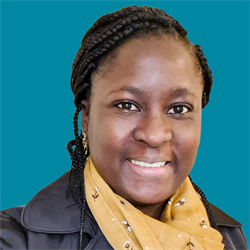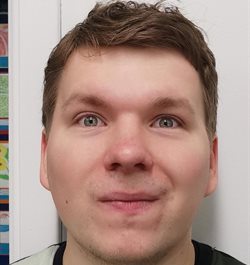View all Close all
Dr Emily Woodcock – Head of Imaging Resource Facility

Dr Emily Woodcock is head of the Imaging Resource Facility (IRF) at City St George’s, University of London. The facility is a multi-disciplinary unit which offers access to world-class microscopy, flow cytometry and histology equipment, as well as training and resources for university researchers. Emily oversees the running of the facility, working in-line with the strategic and operational goals of the university.
Dr Alice Eseola – Imaging Manager

Dr Alice Eseola is the Imaging Manager specialising in light microscopy. She oversees microscope maintenance, provides training, and supports image analysis for students and staff. Alice ensures equipment is up-to-date and is always ready to assist with microscopy and image analysis issues while continually expanding her expertise.
Nikita Demchenko – Cell Biology Manager

Nikita is the Cell Biology Manager at IRF, City St George’s. His responsibilities include maintenance and management of Flow Cytometry and Histology facilities, training staff and students in the use of our flow cytometers, microtomes, cryostats, as well as other histological equipment. Nikita provides advice on experimental design and assists research groups by carrying out sample processing, embedding, sectioning, staining and scanning, as well as cell sorting.
Dr Ariel Poliandri

As the Director of Research Operations, Ariel heads the Research Operations Leadership Team and has oversight of the IRF’s strategic operations.
Dr Daniel Osborn – Academic Director of Image Resource Facility
I am a Senior Lecturer in functional genetics with a focus on understanding the molecular mechanisms of neuromuscular disorders using the zebrafish as an animal model of rare human genetic disease.
The zebrafish offers a tractable system for dissecting the roles of many genetics components involved in the pathology of disease. It is through my love of zebrafish development that I have become fascinated with microscopy. Zebrafish embryos develop outside of the mother and are relatively transparent, indeed we can visualise development using a simple microscope. However, cell behaviour and genetic pathway analysis can be interrogated in great detail using more powerful microscopy techniques.
With this interest in mind, I am also the Academic Director of the Imaging Resource Facility (IRF), where we aim to coordinate all the current Imaging Resources – Light -Epifluorescence and Confocal Microscopy (with live imaging capabilities), and sample preparative equipment – to offer a service to the City St George’s research community, NHS-Trust and other external users. Thus, if you feel your project could benefit of a specific microscopy technique, we would be very pleased to hear about it and see how we could help.
The Imaging Research Facility (IRF) is proud of its strong and well-established partnership with Nikon Instruments UK, which has significantly enhanced teaching and research efforts at City St George’s, University of London. This collaboration has led to the successful delivery of imaging workshops, including contributions to the Frontiers in Human Health Summer School, a highly regarded program aimed at fostering new scientific insights.
Our partnerships are designed to provide the highest quality of support to City St George’s researchers and students.
The Imaging Research Facility (IRF) at City St George’s, University of London, offers advanced imaging technology and expert support for businesses and researchers. Whether you're a start-up or established institution, the IRF provides tailored solutions to accelerate your research and innovation.
Partnering with us means tapping into a wealth of expertise in advanced imaging techniques, cytometry data analysis. Our experienced team is dedicated to helping you accelerate your research, and achieve breakthrough discoveries. Let us help you transform ideas into results by emailing us at irf@sgul.ac.uk.